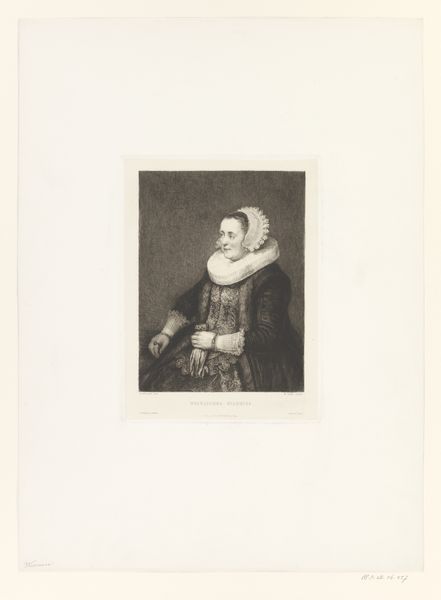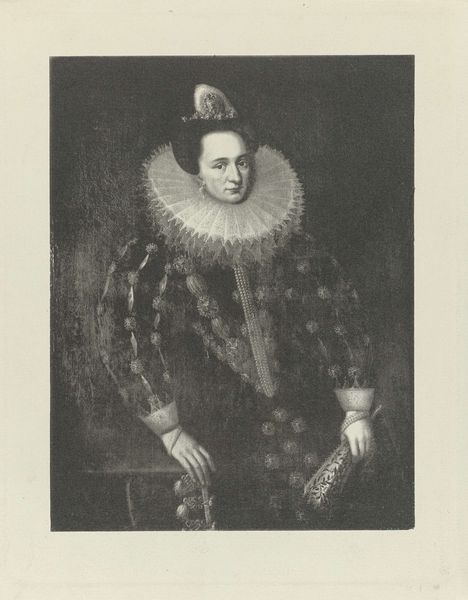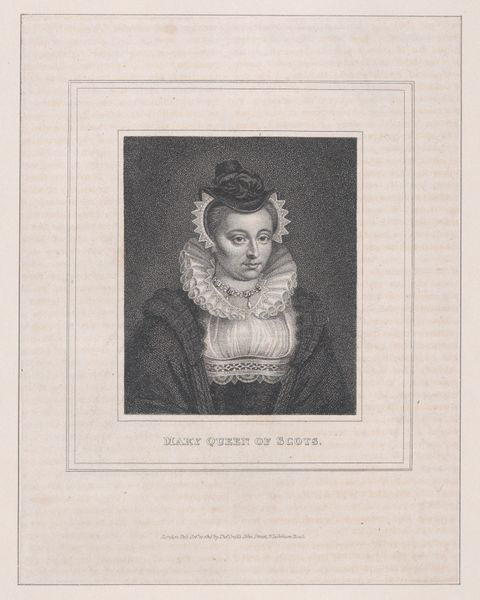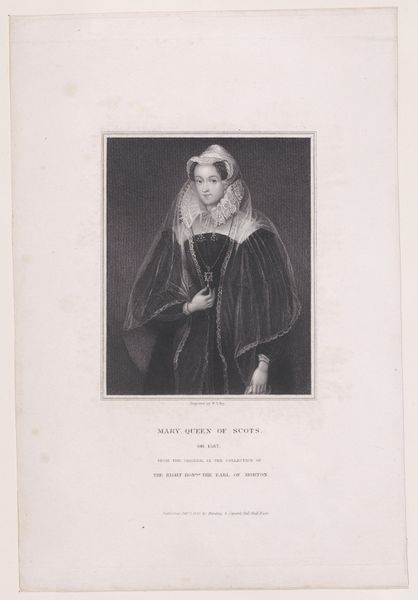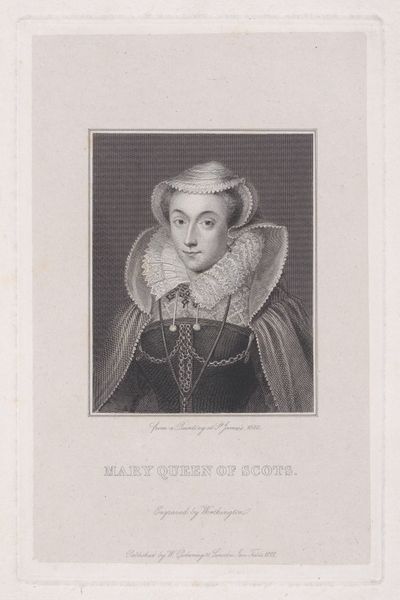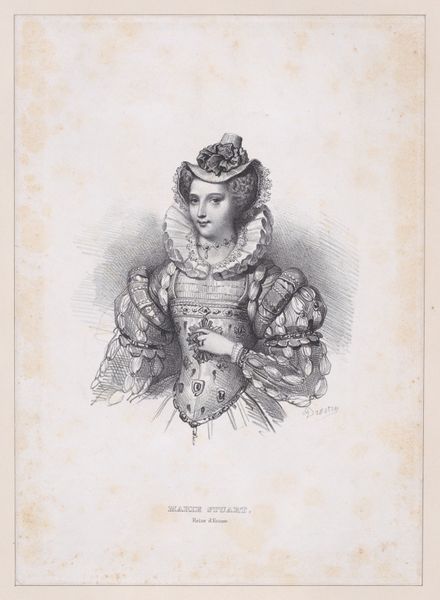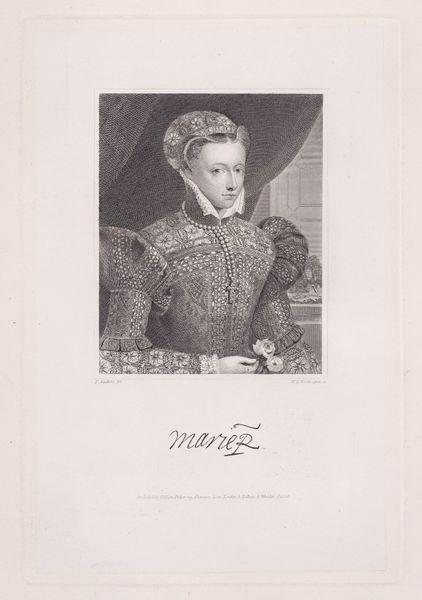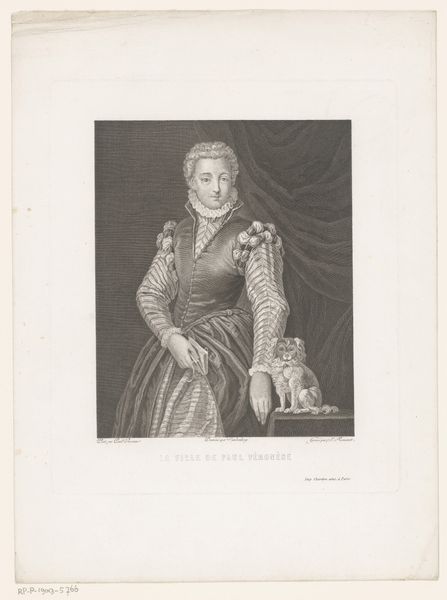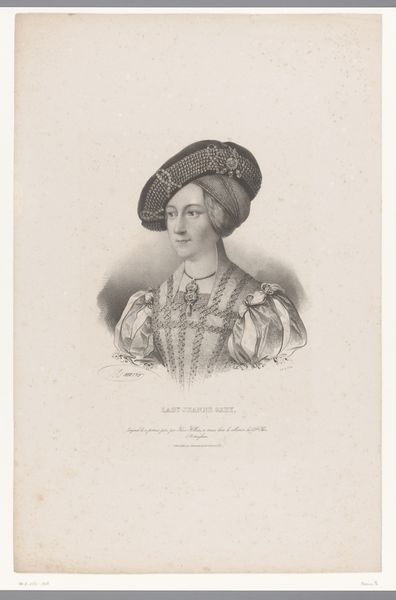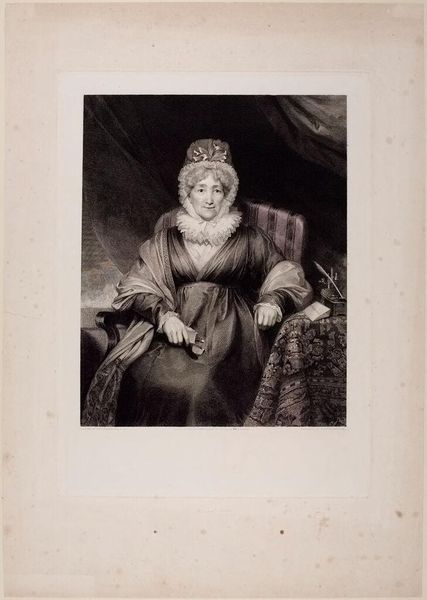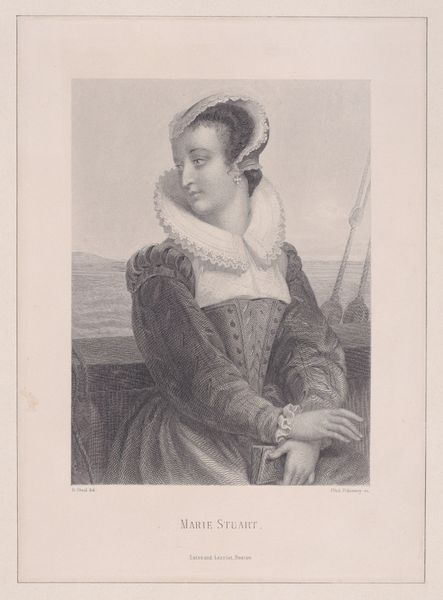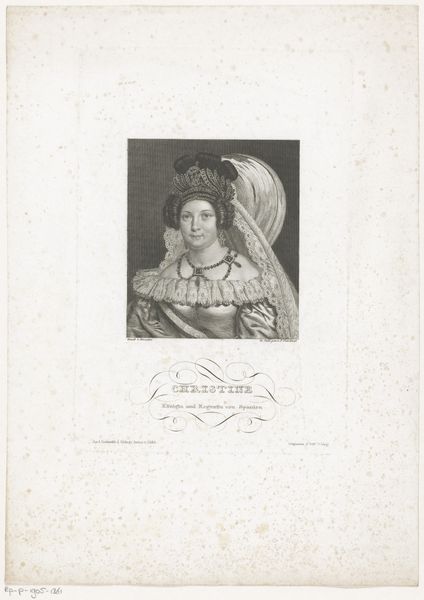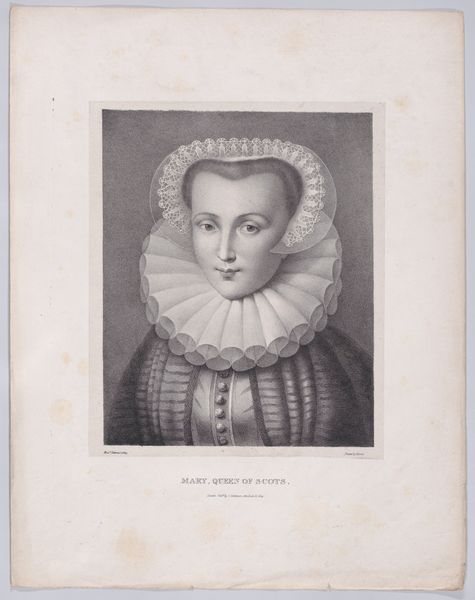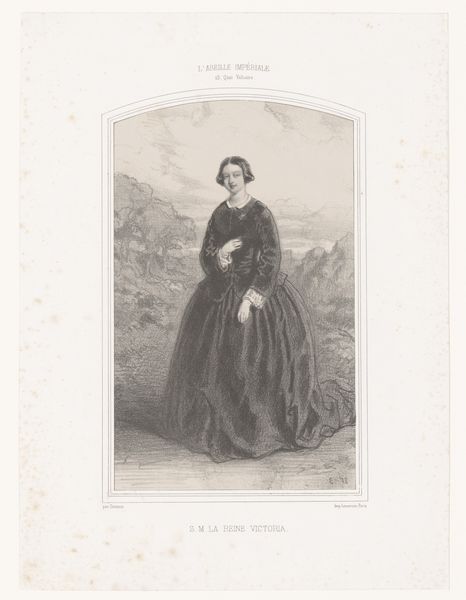
drawing, print, engraving
#
portrait
#
drawing
# print
#
engraving
Dimensions: Plate: 10 3/4 × 7 3/8 in. (27.3 × 18.8 cm) Sheet: 17 1/16 × 11 5/8 in. (43.3 × 29.5 cm)
Copyright: Public Domain
Curator: This engraving from 1856 by Jacques Etienne Pannier depicts Marie Stuart, or Mary, Queen of Scots, when she was 38 years old. The piece is currently held in the collection of the Metropolitan Museum of Art. Editor: Immediately, I’m struck by the contrasting textures—the delicate lace of her ruff against the heavier fabric of her gown. And those intricate beaded chains, beautifully rendered in the engraving! Curator: The image reflects the continuing fascination with Mary's story during the 19th century, especially in artistic and literary circles, highlighting themes of tragedy, betrayal, and political intrigue. It served a potent role, one of sympathy to her character as a historical persona and monarch of her era. Editor: It's interesting to see how Pannier handled the limited tonal range of an engraving to convey volume and form. Look at the subtle gradations that suggest the roundness of her face. The artist must have been remarkably skilled at understanding the qualities of chiaroscuro in print. Curator: And consider the function of portraiture in general, but specifically in this period. Pannier likely relied upon the interpretation of a portrait from the time when Mary was actually alive, emphasizing not only her likeness, but the dignity and power of the monarch, especially with her high collar. This portrait of her would reach wide audiences, thus preserving her memory. Editor: Her gaze seems somewhat averted, but in a composed manner, not defeated. The cascade of embellishments--the ruff, jewels and multiple draped strands, contrast strikingly with her contained and unreadable affect. Curator: Right, that very composure speaks volumes. The symbols of her status, the chains and fabrics are signifiers to the queen she was stripped of the crown she ruled over. We often reimagine and reinterpret historical figures, and this print helped to perpetuate that into the visual culture. Editor: Absolutely. When you analyze the artist's process, we recognize an incredibly balanced distribution of values on the square picture frame to deliver to us a representation of Mary Stuart which might not have existed in such harmony previously. Curator: An image created well after Mary's execution became iconic by drawing upon artistic traditions to perpetuate her presence in historical narratives. Editor: The longer I consider it, the more convinced I am that, by a deep knowledge of technique, Pannier gave a subtle depth of being, far exceeding mere reproduction.
Comments
No comments
Be the first to comment and join the conversation on the ultimate creative platform.
